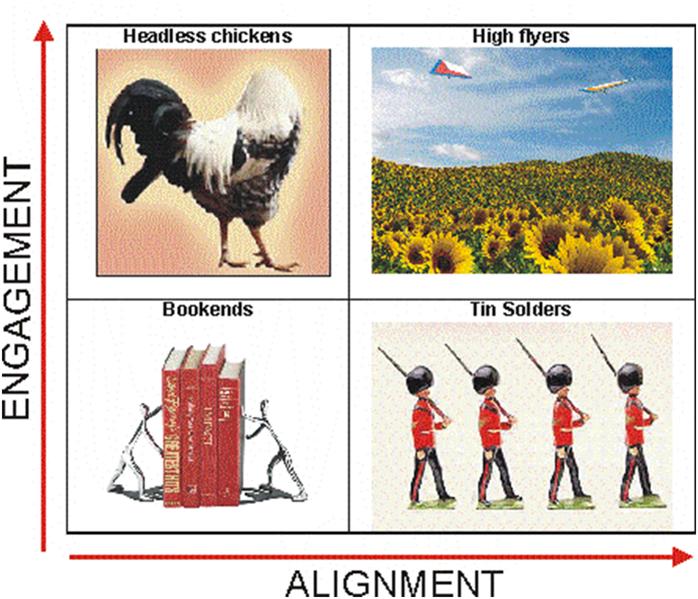The move to greater engagement and retention is very firmly in the spotlight in recent years for all organisations that work with people. With younger people more and more ‘time poor’ and older people joining the ranks of the ‘Grey Nomads’, there are often not enough people to go around. The key factor here is that attracting and keeping engaged people is even more critical to any organisation and is crucial to creating a desired vision.
Several research studies show a clear correlation between engagement and retention. Remember engaged individuals stay for what they can give while disengaged individuals stay for what they can get. A 2017 survey of over 11,000 people across 20 countries stated that 31% of people say they are “fully engaged”. It should be noted that they are then 3 times more likely to give their best and stay with their organisation. The same research tells us that 17% of people say they are “disengaged”, and a further 26% are only “minimally engaged” or 43% in total. When people report that they are “fully engaged,” does that mean they are happy? The answer is, probably, but more importantly, engagement has to do with willingly and fully performing at your best. So, happy is good but not enough in itself. That means that we have to engage the heart and soul of the people we lead, or we will not get their best.
How should we go about engaging and aligning our people?
According to authors David Macleod and Chris Brady in “The Extra Mile: How to Engage Your People to Win”, there are 7 key factors that come together to create well-aligned engagement. They suggest that an engaged and aligned individual:
- understands how what they do (their role) contributes to the organisation’s goals, objectives and direction
- is personally motivated to help with that success/li>
- cares about the future of the organisation
- is willing to put in effort beyond what is normally expected
- derives a sense of personal accomplishment from their role
- believes that their organisation inspires them to do their best
- is proud to tell others that they are a part of their organisation
All this boils down simply to each person wanting to feel valued and recognized. Unfortunately this important need often goes unmet. A 2010 Gallup poll found that 65% of those surveyed said that they hadn’t received any recognition whatsoever from their leader in the past year.
Engagement and Alignment – A Model for Action
In their book mentioned earlier, David MacLeod and Chris Brady developed a simple model to help every leader to better appreciate what could be done in the future, by helping to better understand where people may fail today and where they could progress in the future. In the chart below, you can see these two factors laid out in a grid showing all four combinations when engagement and alignment are plotted on two different axes.
Let’s start in the bottom left quadrant with what the authors call employee Bookends. Think of a team in which engagement is present at very low levels – that is, people are not very energized or excited about what they do. They may be disengaged or even completely disaffected; their performance is poor, not enough is getting done and a bad attitude may prevail. There is also low alignment. Goals are not lined up to support organisational outcomes, OR people are unaware of goals for the organisation, so they work on activities that may be unwanted or of low value. They are doing the minimum and, in a sense, standing still. This team is most likely collectively disorganized and inefficient; they may be in a safe unchallenging niche (at least in the short term).
Now let’s look at the bottom right quadrant where the authors call these people Tin Soldiers. Here we have high alignment, but low engagement. These people know the team and organisational goals, and are working in a well-coordinated way towards them, but at the same time are not very personally interested or excited about their role. Collectively the team may be orderly and quite efficient but it lacks dynamism. To imagine this, think of the worst kinds of bureaucratic organisations.
Then there is the top left quadrant, where the authors deem people to be Headless Chickens>. These people have high engagement – everyone is very busy and energetic, and maybe even excited about their individual work and goals. However, alignment is low. People are running in many different directions, not sure which is most important or critical and the team has no cohesion or even organisation. This is a chaotic environment often with high levels of individualism. In such a climate standards and control are often lacking.
The ideal quadrant (top right above) is one with high engagement and high alignment, which is what the authors call the High Flyers, simply because it is the “best-practice” place to be. Everyone is individually and collectively motivated and working together as a fully coordinated team. Think of a well-oiled and experienced emergency medical team in a crisis where everyone is there for the same purpose – to preserve and promote life.
Summary
It is not realistic to expect everyone to be engaged and aligned at the top right of the above chart. However the chart does provide a useful framework for all leaders to think about not only how many of the people on their team fall into the bottom left quadrant but also what actions they may want to take to either boost engagement strategies, or to increase alignment through better organisation and control.
Dr. Jon Warner is a prolific author, management consultant and executive coach with over 25 years experience. He has an MBA and a PhD in Organizational Psychology.

Colin is the Director of ResourceZone. He has 30 years of ministry experience as a pastor, college lecturer and consultant/coach to consultants, denominational leaders and local church pastors.





